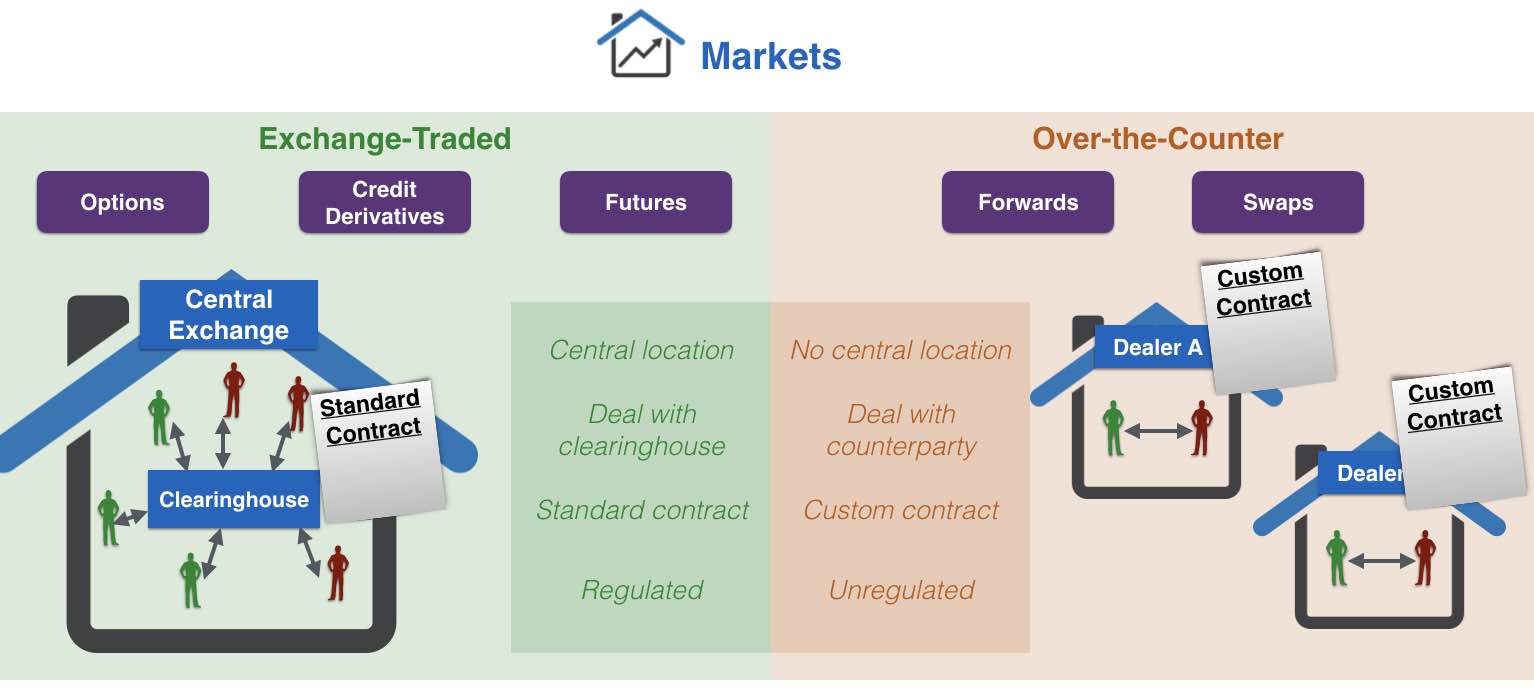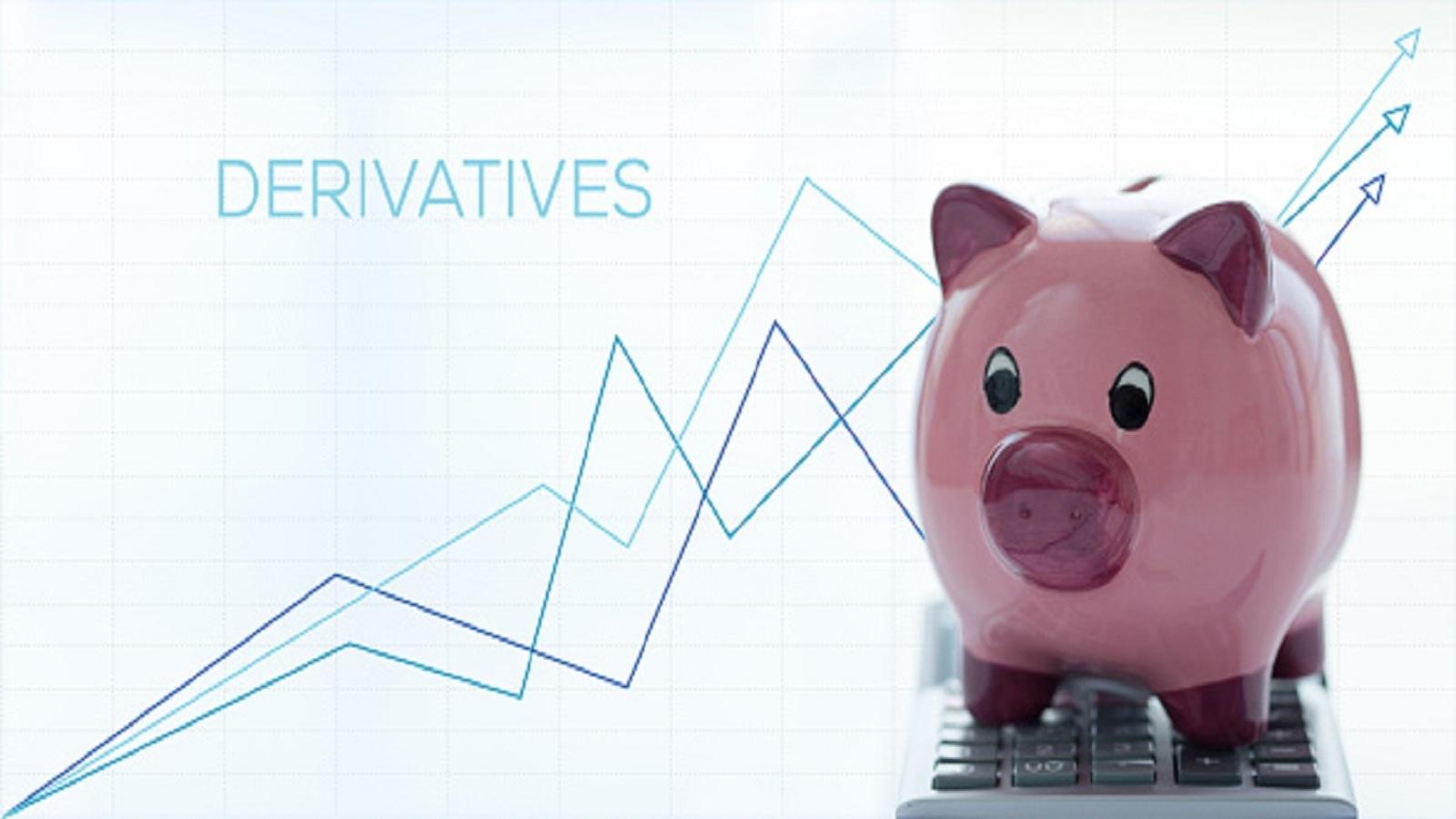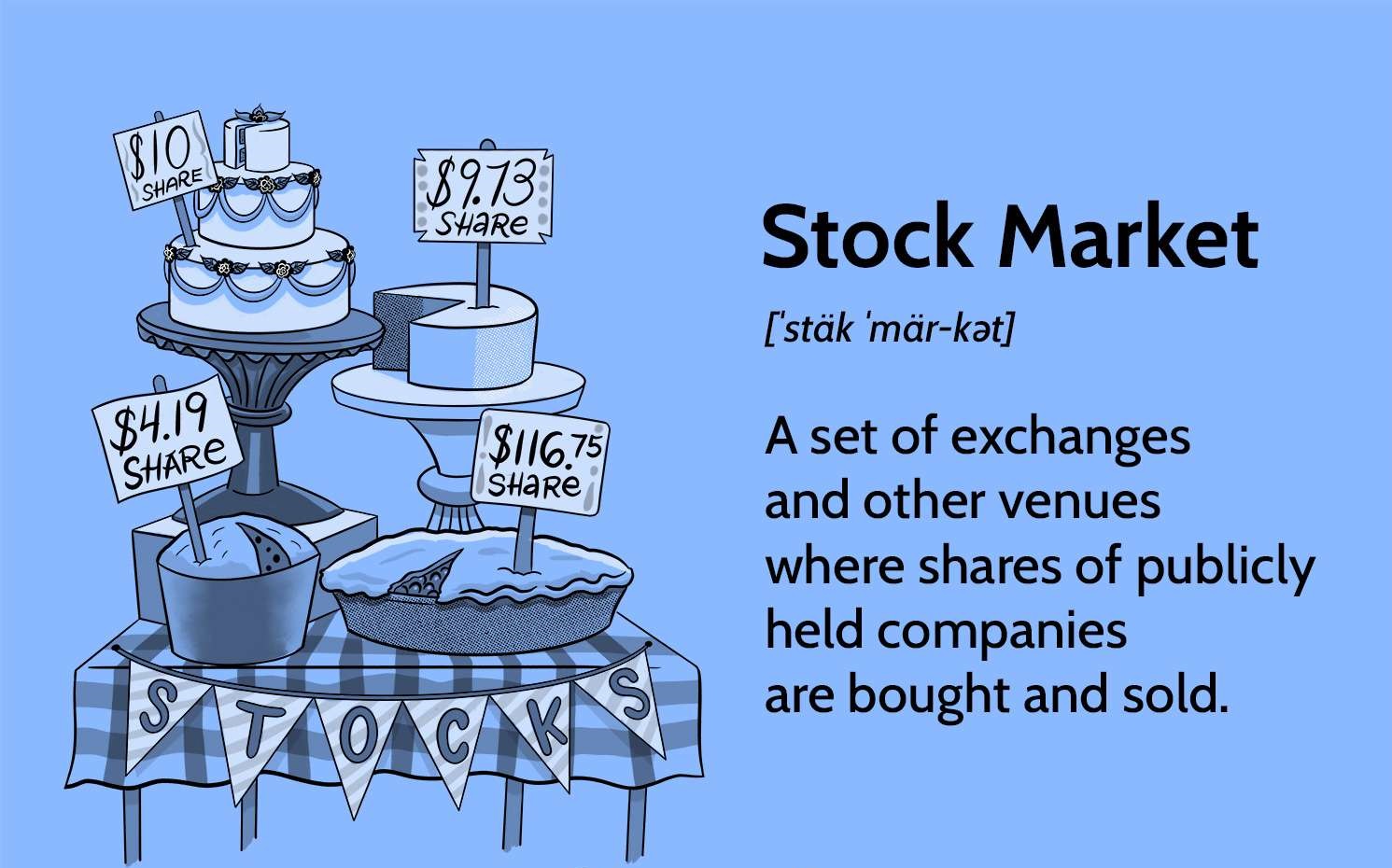Introduction
Welcome to the world of derivative trading! In today’s rapidly evolving financial landscape, derivative trading has become a popular investment strategy for both seasoned professionals and individual retail investors. This dynamic form of trading offers opportunities to profit from changes in the prices of underlying assets, such as stocks, commodities, currencies, and more.
Derivatives, as the name suggests, derive their value from an underlying asset. They can be thought of as financial contracts that enable traders to speculate on the price movements of the underlying asset without actually owning it. This unique characteristic distinguishes derivative trading from traditional forms of investing and introduces a range of strategies and complexities that require a deeper level of understanding.
Derivatives come in various forms, including options, futures, swaps, and forward contracts. Each type of derivative has its own specific features and is tailored to cater to different trading needs. Whether you’re looking to hedge against market risks, generate income, or simply capture short-term price movements, there is likely a derivative instrument suitable for your objectives.
The functioning of derivative trading can be best understood through the concept of leverage, which allows traders to amplify their exposure to the underlying asset. By using margin and leverage, traders can control a larger position in the market compared to the amount of capital they actually possess. This potential for higher returns, however, must be carefully managed as it also magnifies the risks involved.
While derivative trading presents enticing profit opportunities, it is important to acknowledge the inherent risks associated with this type of investment. Derivatives are highly leveraged instruments that can result in significant financial losses if not approached with caution and proper risk management strategies.
In this article, we will delve into the world of derivative trading, exploring its different types, mechanics, risks, and rewards. Whether you’re a novice investor looking to expand your knowledge or an experienced trader seeking new trading avenues, this guide will provide valuable insights to help you navigate the exciting world of derivative trading.
Definition of Derivative Trading
Derivative trading refers to the buying and selling of financial instruments, known as derivatives, with the primary purpose of profiting from the price movements of the underlying assets. Unlike traditional forms of investing, where investors directly own the assets like stocks or commodities, derivative traders enter into contracts that derive their value from these underlying assets.
Derivatives can be categorized into various types, including options, futures, swaps, and forward contracts. Let’s take a closer look at each of these categories:
- Options: Options give the trader the right, but not the obligation, to buy or sell an underlying asset at a predetermined price, known as the strike price, within a specified timeframe. Call options provide the right to buy, while put options provide the right to sell.
- Futures: Futures contracts obligate the buyer to purchase and the seller to sell an underlying asset at a predetermined price and future date. Unlike options, futures contracts do not provide the option to choose whether to exercise the contract or not.
- Swaps: Swaps involve the exchange of cash flows or other financial obligations between two parties. They are typically used to manage interest rate or currency exchange rate risks.
- Forward contracts: Similar to futures contracts, forward contracts involve an agreement to buy or sell an asset at a predetermined price and future date. However, forward contracts are generally customized agreements between two parties, whereas futures contracts are standardized and traded on exchanges.
Derivative trading allows investors to benefit from price movements in the financial markets without the need for owning the underlying assets. Traders can profit by accurately predicting the direction of the market or by implementing various hedging strategies to mitigate potential risks.
One crucial feature of derivative trading is leverage. Through margin trading, traders can control a more substantial position in the market with a relatively smaller investment. While leverage amplifies potential profits, it also exposes traders to higher risks. It is essential for traders to carefully manage their positions and utilize risk management techniques, such as stop-loss orders and position sizing, to protect their capital.
Overall, derivative trading offers a flexible and diverse range of financial instruments to investors, allowing them to speculate on the prices of underlying assets and manage risks more effectively. By understanding the intricacies of different types of derivatives and implementing sound trading strategies, traders can navigate the dynamic landscape of derivative trading and potentially generate significant profits.
Types of Derivatives
Derivatives encompass a wide array of financial instruments that derive their value from underlying assets. Each type of derivative serves a unique purpose and offers distinct advantages to traders. Let’s explore the most common types of derivatives in detail:
- Options: Options provide the buyer with the right, but not the obligation, to buy or sell an underlying asset at a predetermined price within a specified timeframe. Call options give the buyer the right to buy the asset, while put options grant the right to sell. Options allow traders to profit from both rising and falling market prices, making them a versatile tool for speculation and hedging.
- Futures: Futures contracts obligate the buyer to purchase and the seller to sell an underlying asset at a predetermined price and future date. They are standardized contracts traded on exchanges, offering liquidity and transparency. Futures are commonly used for speculating on price movements or hedging against potential risks.
- Swaps: Swaps involve an agreement between two parties to exchange financial obligations or cash flows. The most common types of swaps are interest rate swaps and currency swaps. Interest rate swaps allow parties to exchange fixed and floating interest rate payments, while currency swaps enable the exchange of principal and interest payments in different currencies. Swaps are utilized to manage risks related to interest rates, exchange rates, and other financial variables.
- Forward Contracts: Forward contracts are agreements between two parties to buy or sell an asset at a predetermined price and future date. Unlike futures contracts, forward contracts are typically customized and traded over-the-counter (OTC). They offer flexibility in terms of contract specifications and are commonly used to hedge against specific risks.
Each type of derivative has its own unique characteristics and advantages, allowing traders to tailor their strategies to fit their specific needs. Whether you’re looking to speculate on price movements, hedge against risks, or manage interest rate and currency exposures, derivatives provide the necessary tools to achieve your goals.
It’s important to note that while derivatives offer opportunities for profit and risk management, they also involve a degree of complexity and potential risks. Traders must thoroughly understand the terms and mechanics of each derivative instrument before engaging in trading activities. Additionally, implementing risk management strategies and conducting comprehensive market research are essential to mitigate potential losses.
As derivative markets continue to evolve, new and innovative instruments may emerge. It’s crucial for traders to stay informed about market developments and continuously expand their knowledge and skills to navigate the ever-changing landscape of derivatives trading successfully.
How Derivative Trading Works
Derivative trading is built upon the principle of speculation on, or hedging against, the price movements of underlying assets. To understand how derivative trading works, let’s explore the basic steps involved in executing a derivative trade:
- Selecting an underlying asset: The first step in derivative trading is choosing the underlying asset on which the derivative instrument will be based. This can include stocks, commodities, currencies, interest rates, or even market indices.
- Selecting the derivative instrument: Once the underlying asset is determined, traders need to choose the specific type of derivative instrument that aligns with their trading strategy and objectives. This could be options, futures, swaps, or forward contracts.
- Entering into a trade: Traders enter into derivative trades by either buying or selling the derivative contracts, depending on their anticipated price movements of the underlying asset. Buying a derivative contract is known as taking a long position, while selling a derivative contract is known as taking a short position.
- Managing the trade: Once a derivative position is established, traders need to actively manage their trades. This involves monitoring the price movements of the underlying asset and making informed decisions regarding holding, closing, or adjusting the position based on market conditions and trading strategies.
- Profiting from price movements: The ultimate goal of derivative trading is to profit from the price movements of the underlying asset. Traders can achieve this by accurately predicting the direction of the market and timing their trades accordingly. They can also use various strategies, such as options spreads or futures arbitrage, to capitalize on market inefficiencies.
Furthermore, derivative trading often involves the use of leverage, which enables traders to control a larger position in the market compared to their invested capital. Leverage magnifies both potential profits and losses, adding an additional layer of risk and requiring traders to exercise proper risk management techniques.
To execute derivative trades, traders can utilize various platforms, including online trading platforms offered by brokers, which provide access to global derivative markets. These platforms offer real-time market data, charting tools, and order placement functionalities to facilitate smooth and efficient trading.
It’s crucial for traders to develop a solid understanding of the derivative instruments they wish to trade as well as the factors that influence the price movements of the underlying assets. Conducting thorough research, staying updated with market news and events, and utilizing technical and fundamental analysis can help traders make informed decisions and enhance their chances of success in derivative trading.
By mastering the mechanics of derivative trading and incorporating disciplined trading strategies, traders can potentially generate significant profits and effectively manage risk in this dynamic and exciting financial market.
Benefits of Derivative Trading
Derivative trading offers a range of benefits that attract traders and investors across the globe. These benefits make derivative trading an attractive and lucrative investment avenue. Let’s explore some of the key advantages of engaging in derivative trading:
- Profit Potential: Derivative trading provides traders with the opportunity to earn substantial profits, even in volatile markets. The use of leverage allows traders to control larger positions with smaller capital investments, amplifying potential returns. By correctly predicting the price movements of underlying assets, traders can capitalize on market trends and generate significant profits.
- Hedging: Derivatives serve as excellent hedging tools, allowing traders to protect their portfolios against adverse price movements. For instance, by purchasing put options, traders can effectively hedge their existing stock positions and mitigate potential losses in case of a market downturn. This ability to offset potential losses provides a level of risk management and stability to traders.
- Diversification: Derivatives offer access to a wide range of underlying assets, including stocks, commodities, currencies, and indices. This diversification opportunity allows traders to spread their investment across various asset classes and reduce the concentration risk associated with holding positions in individual securities. Diversification helps to mitigate overall portfolio risk and potentially enhance returns.
- Liquidity: Many derivatives, such as options and futures, are actively traded on regulated exchanges, ensuring high liquidity. This liquidity allows traders to enter or exit positions quickly and efficiently, ensuring minimal slippage and reducing the impact of transaction costs. Traders can easily find counterparties for their trades, enhancing overall trading flexibility.
- Accessibility: Derivative trading is accessible to a wide range of market participants, including individual retail investors and institutional traders. Online trading platforms provided by brokers offer ease of access to derivative markets, allowing traders to trade from the comfort of their homes or offices. Moreover, derivatives provide access to global markets, enabling traders to participate in various international markets without geographical limitations.
- Opportunity for Income Generation: Derivatives provide traders with the opportunity to generate passive income through various strategies. For example, selling covered call options allows investors to collect premiums while potentially selling their shares at a higher price. By capturing income-generating opportunities, traders can enhance their overall investment returns.
Derivative trading undoubtedly offers numerous benefits for investors and traders alike. However, it is crucial to remember that derivative trading involves risks as well. It is important to thoroughly understand the underlying assets and the mechanics of derivative instruments, and to employ proper risk management strategies to mitigate potential losses.
By leveraging the benefits of derivative trading while implementing sound trading strategies, traders can potentially enhance their investment portfolios and navigate the financial markets more effectively.
Risks of Derivative Trading
While derivative trading offers enticing profit potential and various benefits, it also comes with inherent risks that traders must be aware of and carefully manage. Understanding these risks is crucial for responsible participation in derivative markets. Let’s explore some of the key risks associated with derivative trading:
- Market Risk: Derivatives are highly sensitive to price movements in the underlying assets. Fluctuations in market prices can result in substantial gains or losses. If the market moves against a trader’s position, it can lead to significant financial losses. The volatility of the underlying assets and unpredictable market conditions can exacerbate market risk.
- Leverage Risk: The use of leverage in derivative trading can magnify both profits and losses. While leverage can enhance potential returns, it also increases the exposure to losses. Traders must exercise caution and employ proper risk management techniques to protect their capital and prevent excessive losses due to leverage.
- Counterparty Risk: In certain derivative contracts, traders rely on counterparties to fulfill their obligations. The default or financial instability of a counterparty can pose significant risks. Traders should carefully assess the creditworthiness and reliability of counterparties before entering into any derivative agreements.
- Liquidity Risk: While many derivatives are traded on regulated exchanges, some derivative contracts may have lower liquidity or trade over-the-counter (OTC). Lower liquidity can result in wider bid-ask spreads and increased difficulty in entering or exiting positions at desired prices. Traders should be aware of the liquidity of the derivative instruments they trade and factor it into their risk management strategies.
- Operational Risk: Derivative trading involves interaction with trading platforms, technological systems, and infrastructure. Technical glitches, system failures, or cyber-attacks can disrupt trading activities and result in financial losses. Traders must have robust operational risk mitigation measures in place and choose reliable platforms and brokers.
- Regulatory Risk: Derivative trading is subject to regulatory oversight and changes in regulations can impact trading conditions and profitability. Traders should stay informed about regulatory developments and ensure compliance with applicable laws to mitigate regulatory risks.
It is crucial for derivative traders to have a comprehensive understanding of these risks and develop effective risk management strategies. This can include diversifying trading positions, setting stop-loss orders, implementing hedging strategies, and thorough market analysis. Proper risk management is essential to protect capital and navigate the challenging landscape of derivative trading successfully.
While derivative trading offers substantial profit potential, traders must be cognizant of the risks involved and exercise caution and discipline in their trading activities. By gaining a deep understanding of the risks and implementing appropriate risk mitigation strategies, traders can navigate the markets more confidently and improve their chances of long-term success in derivative trading.
Common Strategies in Derivative Trading
Derivative trading offers a wide range of strategies that traders can employ to enhance their profitability and manage risk. These strategies utilize the unique characteristics of derivative instruments to capitalize on market opportunities. Let’s explore some of the common strategies in derivative trading:
- Speculation: Speculative strategies involve taking positions in derivatives with the expectation of profiting from the anticipated price movements of underlying assets. For example, a trader may purchase a call option on a stock if they believe its price will rise. Speculation allows traders to potentially earn substantial profits by correctly predicting the market direction.
- Hedging: Hedging strategies are employed to offset potential losses from existing positions in the market. For instance, if a trader holds a portfolio of stocks and wants to protect against a possible downturn, they can purchase put options on the stocks. Hedging helps to mitigate losses by providing insurance against adverse market movements.
- Spread Trading: Spread trading involves simultaneously buying and selling two or more derivative contracts to profit from the price differences between them. For example, traders can execute an options spread by buying call options with a lower strike price and selling call options with a higher strike price. Spread trading can help traders capitalize on the relative price movements of different derivative contracts.
- Arbitrage: Arbitrage strategies aim to profit from price discrepancies between different markets or related instruments. Traders identify price inefficiencies and execute trades to profit from the price convergence. For example, a trader may simultaneously buy an asset on one exchange and sell it on another exchange where the price is higher, earning a risk-free profit from the price difference.
- Straddle and Strangle: Straddle and strangle strategies involve purchasing both call and put options with the same expiration date and strike price (straddle) or different strike prices (strangle). These strategies are used when traders anticipate a significant price movement but are unsure about the direction. By using these strategies, traders can profit from large price swings regardless of whether the price increases or decreases.
- Calendar Spreads: Calendar spreads, also known as horizontal spreads or time spreads, involve taking opposite positions in derivative contracts with different expiration dates. This strategy aims to profit from the difference in time decay rates between the contracts. Calendar spreads can be implemented with options or futures contracts, and they take advantage of changes in implied volatility and time value.
These are just a few examples of the many strategies that traders employ in derivative trading. It’s important for traders to thoroughly understand the mechanics of each strategy and consider factors such as market conditions, risk tolerance, and investment objectives when selecting a strategy. Implementing these strategies requires discipline, careful analysis, and continuous monitoring of market conditions to maximize the effectiveness of the chosen strategy.
It’s worth noting that while these strategies offer potential benefits, they also carry risks. Traders should fully evaluate the potential risks associated with each strategy and develop risk management techniques to protect their capital and minimize losses.
By utilizing appropriate strategies and effectively managing risks, derivative traders can optimize their trading performance and maximize their profit potential in the dynamic and exciting world of derivative trading.
Understanding Margin and Leverage in Derivative Trading
Margin and leverage are important concepts in derivative trading that allow traders to enhance their market exposure and potential returns. However, it is essential to understand how margin and leverage work and the associated risks. Let’s explore these concepts in detail:
Margin: Margin is the amount of capital that traders are required to deposit with their brokers to open and maintain derivative positions. It serves as a form of collateral to cover potential losses in the event the trade moves against the trader. The margin requirement is typically a percentage of the total contract value and is set by the broker or exchange.
Leverage: Leverage is the ability to control a larger position in the market with a smaller amount of capital. It allows traders to amplify their potential profits, but it also increases the risk of larger losses. By using leverage, traders can gain exposure to a higher value of the underlying asset with a fraction of the total value. For example, if the leverage ratio is 1:10, a trader can control a $10,000 position in the market with just $1,000 of capital.
When leverage is employed in derivative trading, the potential returns or losses are multiplied. While this presents opportunities for higher profits, it also magnifies the risks involved. Therefore, it is crucial for traders to exercise caution and employ proper risk management techniques to protect their capital.
It’s important to note that different derivative products have varying margin requirements and leverage ratios. Brokers and exchanges set these requirements based on factors such as the asset’s liquidity, volatility, and regulatory guidelines. It is vital for traders to fully understand and comply with the margin and leverage requirements of the specific derivative product they intend to trade.
Traders should also be aware of the concept of margin calls. If the value of the position declines and the amount of capital in the trading account falls below a certain threshold, a margin call may be issued by the broker. This requires the trader to deposit additional funds to meet the margin requirement or close some or all of their positions to limit potential losses. Failing to meet a margin call may result in the forced liquidation of positions.
To effectively manage margin and leverage in derivative trading, traders should:
- Understand their risk tolerance: Traders need to assess their risk tolerance and determine the amount of capital they are willing to allocate for trading with leverage.
- Implement risk management strategies: Traders should employ risk management techniques, such as setting stop-loss orders and using proper position sizing, to limit potential losses and protect their trading capital.
- Regularly monitor positions: Traders should continuously monitor their positions and market conditions to make informed decisions about when to enter or exit trades. This helps to manage exposure and minimize the risk of unexpected market movements.
- Stay informed: Traders should stay updated with market news, economic indicators, and other factors that can impact the price movements of the underlying assets. This enables them to make more accurate predictions and adjust their trading strategies accordingly.
By understanding and effectively managing margin and leverage, traders can optimize their trading performance and balance the potential returns with the associated risks. It is crucial to approach margin and leverage responsibly to protect against excessive losses and ensure a sustainable trading approach.
Difference Between Derivative Trading and Stock Trading
Derivative trading and stock trading are two distinct approaches to investing in financial markets. While both involve buying and selling assets, there are several key differences between the two. Let’s explore these differences in detail:
- Ownership of Assets: One of the fundamental differences between derivative trading and stock trading lies in the ownership of assets. In stock trading, investors purchase shares of ownership in a company, making them partial owners of the company. In derivative trading, however, traders do not actually own the underlying assets. They enter into contracts that derive their value from the price movements of these assets without owning them.
- Investment Timeframe: Stock trading typically involves longer-term investments, where investors buy shares with the intention of holding them for an extended period. They may focus on factors such as company performance, industry trends, and dividends. Derivative trading, on the other hand, often involves shorter-term investments, where traders aim to profit from price fluctuations in the underlying assets over a defined timeframe.
- Profit Potential: While both derivative trading and stock trading offer profit potential, derivative trading can provide traders with additional opportunities for higher profits. Derivatives allow traders to use leverage, magnifying potential returns. Traders can profit from both rising and falling markets by taking long or short positions, whereas in stock trading, investors can only profit if the shares increase in value.
- Market Exposure: In stock trading, investors are exposed to market risks associated with the specific company they invest in. Factors such as company performance, industry trends, and economic conditions can significantly impact the value of their investments. In derivative trading, traders are exposed to broader market risks since derivatives derive their value from underlying assets across various markets, such as stocks, commodities, currencies, or interest rates.
- Complexity: Derivative trading is generally considered more complex and requires a deeper understanding of the underlying derivative instruments and their mechanics. Stock trading, while still requiring research and analysis, is relatively more straightforward since investors make decisions based on the performance and prospects of individual companies.
- Leverage and Risk: Derivative trading offers the use of leverage, allowing traders to control larger positions with smaller capital investments. However, this leverage amplifies both potential profits and losses. Stock trading does not typically involve extensive leverage, thereby reducing the risks associated with higher leverage ratios. Investors in stocks face individual company risks, while derivative traders face additional risks such as counterparty risk, liquidity risk, and market risk.
Both derivative trading and stock trading have their advantages and considerations. The choice between the two depends on an individual’s investment goals, risk tolerance, and familiarity with the respective markets. Some investors may prefer the stability and long-term growth potential of stock trading, while others may be attracted to the flexibility and profit potential of derivative trading.
Regardless of the chosen approach, it is crucial for investors and traders to thoroughly research and understand the characteristics of the assets they invest in. They should also implement risk management strategies to protect their capital and make informed decisions based on their investment objectives and the prevailing market conditions.
Key Factors to Consider Before Engaging in Derivative Trading
Before engaging in derivative trading, there are several key factors that traders should carefully consider. These factors will help traders make informed decisions and mitigate risks associated with derivative trading. Let’s explore these factors in detail:
- Market Knowledge: It is essential to have a solid understanding of the market and the specific derivative instruments being traded. Traders should familiarize themselves with the mechanics, characteristics, and potential risks associated with the derivative products they plan to trade.
- Risk Appetite and Risk Management: Traders need to assess their risk tolerance and understand the risks involved in derivative trading. It’s crucial to establish risk management strategies, such as setting stop-loss orders, diversifying positions, and managing leverage appropriately. Understanding the potential losses and the impact of leverage is critical to protect trading capital.
- Investment Objectives: Traders should clearly define their investment objectives before engaging in derivative trading. Whether seeking short-term profits, hedging existing positions, or diversifying their investment portfolio, having a well-defined objective helps in selecting the appropriate derivative instruments and strategies.
- Education and Knowledge: Continuous learning and staying updated with market trends are vital in derivative trading. Traders should invest time in educating themselves about various derivative instruments, trading strategies, and market dynamics. Knowledge of technical analysis, fundamental analysis, and market indicators can provide valuable insights for making informed trading decisions.
- Financial Resources: Traders should have sufficient capital to engage in derivative trading and manage potential losses. It’s important to allocate funds that are not required for immediate expenses or essential financial obligations. Traders should avoid overexposing their capital and carefully assess the impact of trading losses on their overall financial situation.
- Broker Selection: Choosing a reputable broker is crucial for derivative trading. Traders should consider factors such as the broker’s regulatory compliance, trading platform features, commission and fee structures, customer support services, and the availability of educational resources. A reliable broker ensures smooth trading execution and provides access to a variety of derivative markets.
- Market Research: Traders should conduct comprehensive research and analysis to make informed trading decisions. This includes monitoring market news, economic indicators, and significant events that may influence the price movements of the underlying assets. Traders should also pay attention to market trends, market sentiment, and technical indicators to identify potential trading opportunities.
By carefully considering these key factors, prospective derivative traders can position themselves for success in the dynamic and complex world of derivative trading. It’s important to approach derivative trading with a disciplined mindset, continually learning and adapting strategies based on experience, market conditions, and individual trading goals.
Additionally, seeking guidance from experienced professionals or joining communities of like-minded traders can provide valuable insights and support. Engaging in derivative trading requires a commitment to continuous improvement, disciplined risk management, and a thorough understanding of the markets and instruments being traded. By taking these factors into account, traders can lay a solid foundation for profitable and responsible derivative trading.
Conclusion
Derivative trading offers an exciting and dynamic opportunity for traders and investors to participate in the financial markets. With a wide range of derivative instruments available, including options, futures, swaps, and forward contracts, traders can speculate on price movements, hedge against risks, and diversify their portfolios. However, it is crucial to approach derivative trading with a thorough understanding of the instruments, market dynamics, and risk management strategies.
Throughout this article, we have explored the definitions of derivative trading, the types of derivatives, how derivative trading works, and the benefits and risks associated with this form of investment. We have discussed common strategies used by derivative traders and highlighted the importance of understanding margin and leverage. Additionally, we have compared derivative trading with stock trading and outlined key factors to consider before engaging in derivative trading.
In summary, derivative trading presents unique opportunities for profit potential and risk management. Traders can harness the power of leverage to amplify returns, employ various strategies to capitalize on market trends, and diversify their portfolios across different asset classes. However, derivative trading also carries inherent risks, including market risk, leverage risk, and counterparty risk. Therefore, traders must exercise caution, implement proper risk management techniques, and constantly educate themselves about the markets they trade in.
To embark on a successful derivative trading journey, it is crucial to allocate sufficient time and resources for learning, research, and continuous improvement. By staying abreast of market trends, acquiring knowledge of different derivative instruments, and adopting disciplined trading practices, traders can navigate the complexities of derivative trading more effectively.
Ultimately, derivative trading offers a platform for individuals to participate in the global financial markets and potentially generate substantial returns. However, success in derivative trading relies on a combination of knowledge, skill, patience, discipline, and a commitment to sound risk management practices. By understanding the intricacies of derivative trading and approaching it with a mindful approach, traders can aim to achieve their investment goals and navigate the exciting world of derivatives with confidence.

























